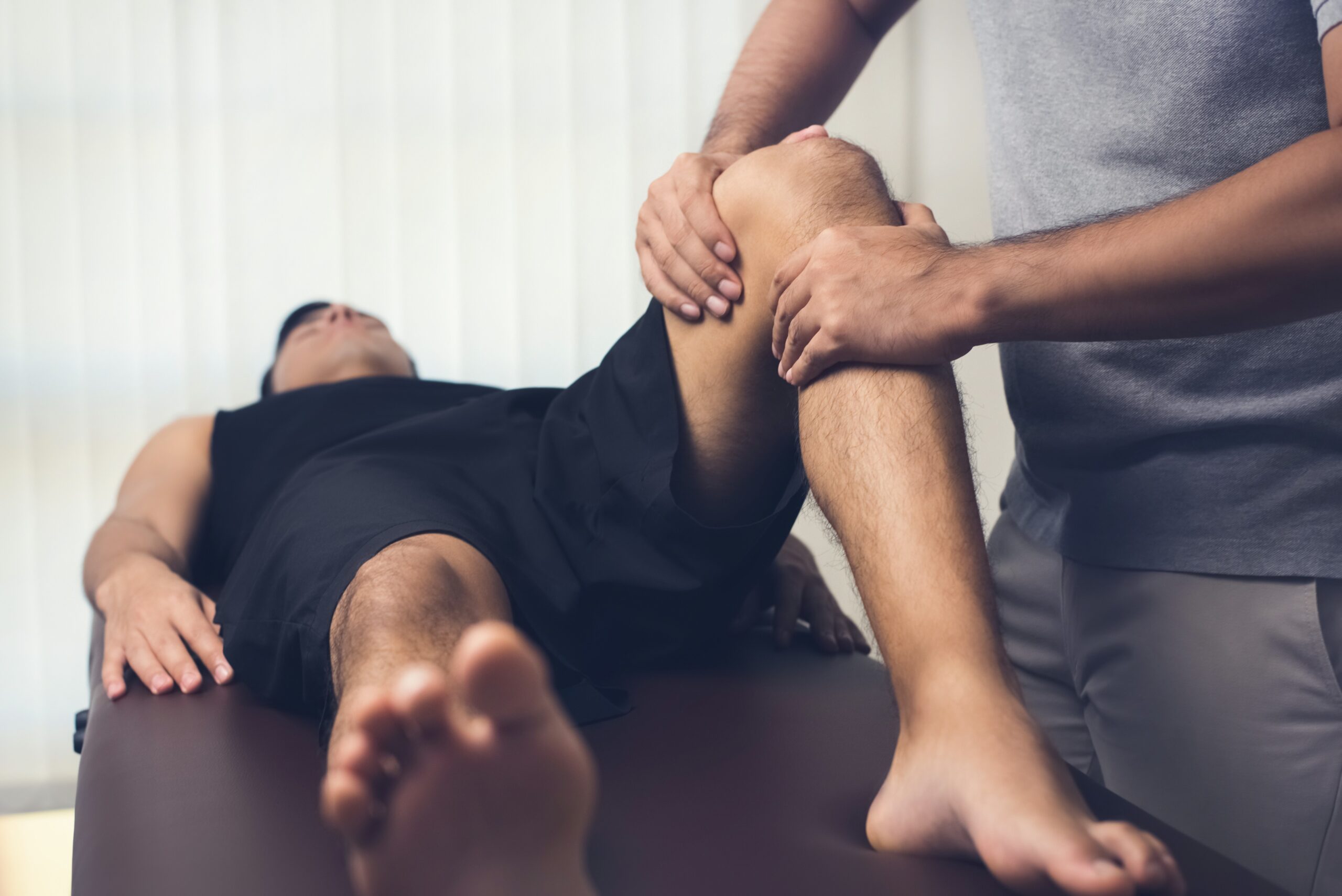Hip and knee replacements are the two most common joint replacement procedures in Canada, with more than 138,000 surgeries a year and estimated inpatient costs of over $1.4 billion annually [2]. These surgeries are aimed at improving mobility and quality of life for the recipient [2]. Monitoring outcomes of hip and knee replacement patients and understanding factors that affect the need for and the outcomes of these procedures is particularly important for our aging population [3].
Several conditions can cause joint pain and disability and lead patients to need joint replacement surgery [1]. Often, joint pain is caused by damage to the cartilage that covers the ends of the bones (articular cartilage) [1]. This can occur due to arthritis, a fracture, or another condition [1]. We know that osteoarthritis (OA) is the most commonly reported diagnosis for joint replacements [4]. There are many factors that can contribute to the development of OA, such as:
- Aging
- Previous joint injury
- Overuse
- Obesity
- Weak muscles
- Genes
- Sex – women are more likely to develop OA than men
The good news is that we know that “physiotherapy helps people delay the need for joint replacement and can help people prepare for and recover from joint replacement surgery” [5]. The Canadian Physiotherapy Association shares that:
- Physiotherapy-led exercise interventions can reduce pain and improve physical function for those waiting for surgery.
- Post-surgery physiotherapy reduces pain.
- Post-surgery physiotherapy increases range of motion.
- Physiotherapy reduces costs by delaying or decreasing the need for surgery. [5]
Physiotherapists play an important role in supporting those waiting for, undergoing, and recovering from joint replacements. Coudeyre et.al (2007), shares that “in particular, physiotherapy interventions in patients anticipating total knee and hip replacements are significant and can result in improved health outcomes, shorter hospital stays, earlier and faster recoveries, and cost reductions”. Patients report strong satisfaction rates when physiotherapists are involved in their recovery post-surgery [7], and they also respond favourably to pre-surgical physiotherapy training programs [8]. Strong evidence exists to support physiotherapy in joint replacements, from pre-operative education to inpatient rehabilitation and community-based services with studies indicating that patients who underwent joint replacement and participated in physiotherapy programs experienced improved outcomes with the greatest health gains achieved from early intervention, starting rehabilitation 24 hours post-surgery [9].
Some examples of cost-benefits and positive health outcomes due to physiotherapy related to joint replacement surgery prevention, preparation, and recovery include:
- Exercise-based physiotherapy interventions can reduce pain and improve physical function for people waiting for a hip replacement surgery [10].
- Post-operatively, studies show that those who participated in physiotherapy programs experienced improved outcomes, such as reduced pain and increased joint range of motion [11].
- Physiotherapy can delay or decrease the need for surgical intervention through appropriate conservative management, resulting in cost savings to the health care system [12].
- Physiotherapy triage of patients referred for surgery provides a greater number of care options and improves patient satisfaction [13].
- Physiotherapy screening and triage of patients referred for surgery reduces costs by decreasing the number of inappropriate specialist referrals; with 34% of patients not requiring surgery [13].
Our hope and role as physiotherapists is to help delay the need for such surgeries, and if you do have to go down the road of a joint replacement we are here to help you adequately prepare and rehab post-operatively to get you back to feeling like you again! If you have any questions related to this or any other topic please reach out at any time. We are happy to answer any questions you may have.
_____________________________________________________
References
1. https://orthoinfo.aaos.org/en/treatment/total-joint-replacement/
2. https://www.cihi.ca/en/cjrr-annual-report-hip-and-knee-replacements-in-canada
3. https://www.cihi.ca/en/canadian-joint-replacement-registry-cjrr
4. Guia, Nicole & Keresteci, Margaret & Shi, Juqing. (2006). Obesity and Joint Replacement Surgery in Canada: Findings from the Canadian Joint Replacement Registry (CJRR). Healthcare policy = Politiques de santé. 1. 36-43. 10.12927/hcpol.2006.18121.
5. https://physiotherapy.ca/npm-2021-physiotherapy-helps-people-delay-need-joint-replacement
6. Coudeyre, E., Jardin, C., Givron, P., Ribinik, P., Revel, M., & Rannou, F. (2007, April). Could preoperative rehabilitation modify postoperative outcomes after total hip and knee arthroplasty? Elaboration of French clinical practice guidelines. Ann Readapt Med Phys, 50(3), 189-97. doi: 10.1016/j.annrmp.2007.02.002
7. Dorr, L.D. & Chao, L. (2007, October). The emotional state of the patient after total hip and knee arthroplasty. Clin Orthop Relat Res., 463, 7-12. PMID: 17960669.
8. Herck, P.V., Vanhaecht, K., Deneckere, S., Bellemans, J., Panella, M., Barbieri, A., & Sermeus, W. (2010, February). Key interventions and outcomes in joint arthroplasty clinical pathways: a systematic review. Journal of Evaluation in Clinical Practice, 16(1), 39–49. doi: 10.1111/j.1365-2753.2008.01111.x
9. Canadian Physiotherapy Association. (2012). The Value of Physiotherapy | Joint Arthoplasty [PDF file]. Retrieved from https://physiotherapy.ca/sites/default/files/valuePT/cpa_valuept_jointarthroplasty-en.pdf
10. Gill, S.D. & McBurney, H. (2013, January). Does exercise reduce pain and improve physical function before hip or knee replacement surgery? A systematic review and meta-analysis of randomized controlled trials. Archives of Physical Medicine and Rehabilitation, 94(13), 164–76. doi: 10.1016/j.apmr.2012.08.211
11. Grotle, M., Garratt, A.M., Klokkerud, M., Løchting, I., Uhlig, T., & Hagen, K.B. (2010, January). What’s in team rehabilitation care after arthroplasty for osteoarthritis? Results from a multicenter, longitudinal study assessing structure, process, and outcome. Physical Therapy, 90(1), 121–31. doi: 10.2522/ptj.20080295
12. Oldmeadow, L.B., Bedi, H.S., Burch, H.T., Smith, J.S., Leahy, E.S., & Goldwasser, M. (2007, June 18). Experienced physiotherapists as gatekeepers to hospital orthopaedic outpatient care. Med J Aust., 186(12), 625-628. doi: 10.5694/j.1326-5377.2007.tb01079.x
13. Aiken, A.B., Harrison, M.M., Atkinson, M., & Hope, J. (2008). Easing the burden for joint replacement wait times: the role of the expanded practice physiotherapist. Healthcare Quarterly, 11(2), 62-66. doi: 10.12927/hcq.2008.19618

